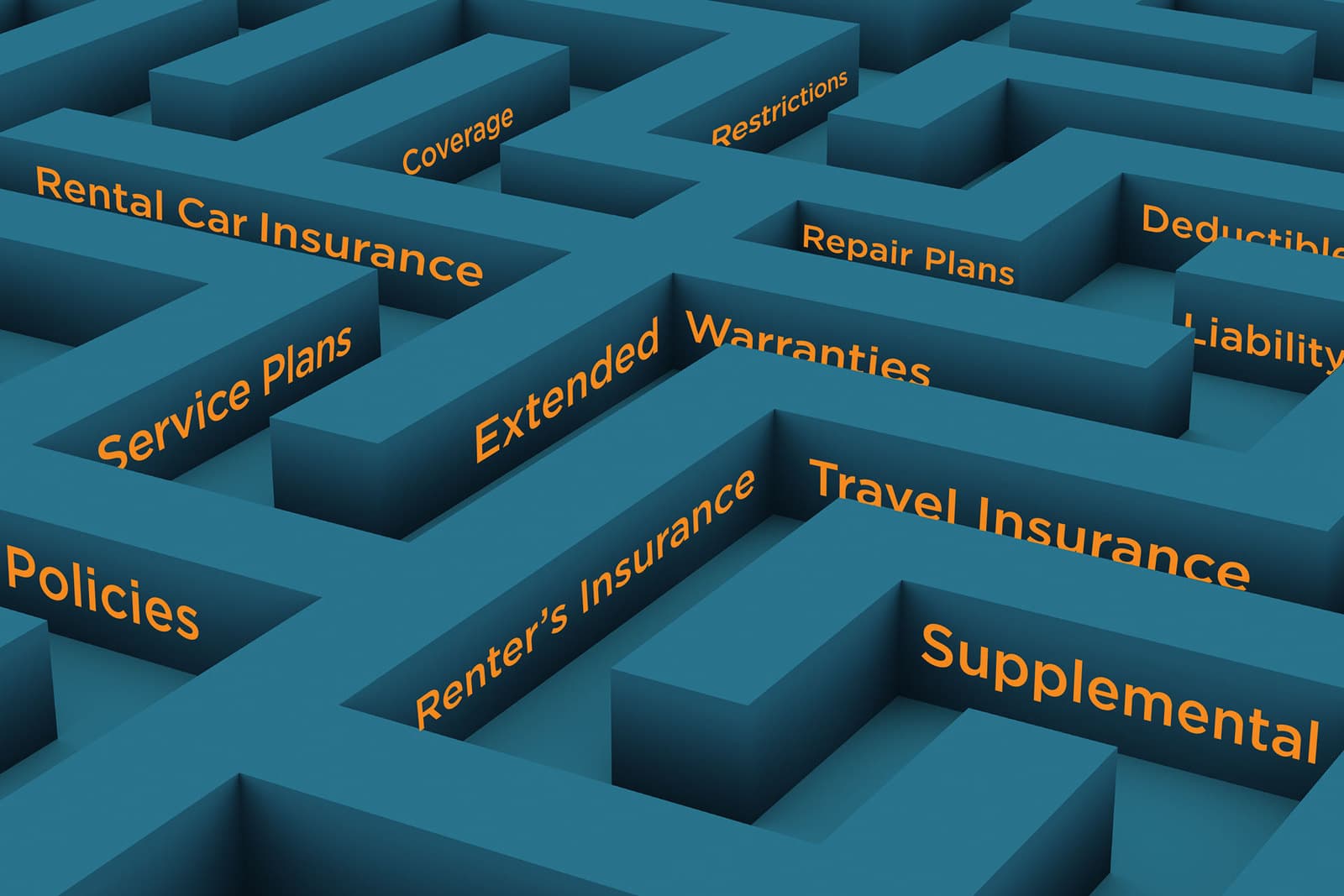

Finance
What Is Gap Coverage For Health Insurance
Modified: December 30, 2023
Discover the importance of gap coverage for health insurance in managing your finances. Learn how this type of coverage can provide added protection and peace of mind.
(Many of the links in this article redirect to a specific reviewed product. Your purchase of these products through affiliate links helps to generate commission for LiveWell, at no extra cost. Learn more)
Table of Contents
Introduction
When it comes to health insurance, navigating through the complex world of coverage options can be overwhelming. While traditional health insurance policies provide basic coverage for medical expenses, there are often gaps in coverage that could leave individuals with unexpected out-of-pocket costs. This is where gap coverage for health insurance comes into play.
Gap coverage, also known as supplemental insurance or supplemental health insurance, is designed to fill in the gaps left by primary health insurance plans. It provides additional financial protection by covering expenses that may not be fully covered by the primary insurance policy. This can include deductibles, copayments, and other out-of-pocket expenses.
The purpose of gap coverage is to provide individuals with added peace of mind and financial security. It helps to protect against the high costs associated with medical care, which can often become a burden on individuals and families. By filling in the gaps in coverage, gap insurance ensures that individuals have access to the healthcare services they need without worrying about the financial burden.
There are different types of gap coverage available, each designed to address specific gaps in health insurance coverage. These types of coverage may focus on specific areas such as dental, vision, prescription drugs, or even specific medical conditions. By selecting the right type of gap coverage, individuals can ensure that they are protected in the areas that are most important to them.
One of the key benefits of gap coverage is that it helps to reduce out-of-pocket expenses. By covering expenses that would otherwise be the responsibility of the insured individual, gap coverage provides financial relief. This can be particularly beneficial for those who have high deductibles or frequent medical expenses.
Despite its advantages, it’s important to understand the limitations of gap coverage. Gap insurance is not a substitute for comprehensive health insurance, and it does not cover pre-existing conditions. Additionally, it is important to carefully review the terms and conditions of any gap coverage policy to understand what is and isn’t covered.
Now that we have established the importance and purpose of gap coverage for health insurance, let’s delve deeper into the different types of gap coverage, how it works, and who may benefit from having gap coverage.
Definition of Gap Coverage
Gap coverage for health insurance, also known as supplemental insurance or supplemental health insurance, refers to a type of insurance that is designed to fill in the gaps left by primary health insurance plans. It provides additional coverage for expenses that are not fully covered by the primary insurance policy, such as deductibles, copayments, and other out-of-pocket expenses.
Gap coverage is designed to provide individuals with financial protection and peace of mind. It helps to ensure that individuals have access to the healthcare services they need without worrying about the financial burden. By filling in the gaps in coverage, gap insurance can significantly reduce the out-of-pocket expenses that individuals may incur in the event of a medical issue.
One important thing to note is that gap coverage is not meant to replace comprehensive health insurance. Instead, it is intended to supplement primary insurance and provide additional coverage where there may be limitations or gaps. Gap coverage typically works alongside a primary insurance policy and can be purchased on top of existing coverage.
The specific coverage provided by gap insurance will vary depending on the policy and the insurance provider. Some policies may focus on specific areas of healthcare, such as dental, vision, or prescription drugs, while others may provide more general coverage for a range of medical expenses. It is important for individuals to carefully review the terms and conditions of any gap coverage policy to fully understand what is covered and what is not.
It is also important to note that gap coverage typically does not cover pre-existing conditions. These are health conditions that individuals have been diagnosed with prior to obtaining the gap insurance policy. Gap coverage is primarily designed to assist with unforeseen medical expenses and does not typically provide coverage for ongoing or pre-existing conditions.
Overall, gap coverage plays a crucial role in helping individuals and families manage the financial aspects of healthcare. By providing additional coverage for expenses that are not fully covered by primary insurance, gap coverage helps to reduce the financial burden that can come with medical care. It is an important consideration for those looking to protect themselves against unexpected healthcare costs and ensure access to necessary medical services.
Purpose of Gap Coverage
The purpose of gap coverage for health insurance is to provide individuals with added financial protection and peace of mind. While primary health insurance plans offer coverage for medical expenses, there are often limitations and gaps in the coverage that can leave individuals facing significant out-of-pocket costs. Gap coverage is designed to bridge these gaps and provide additional coverage for expenses that may not be fully covered by primary insurance.
One of the primary purposes of gap coverage is to reduce out-of-pocket expenses. With rising healthcare costs, individuals can be burdened with high deductibles, copayments, and other expenses that they are responsible for paying. Gap coverage helps to alleviate this burden by covering some or all of these out-of-pocket expenses. This can make a significant difference for individuals and families, especially those who may have frequent medical needs or high deductible plans.
Another purpose of gap coverage is to protect against unexpected medical costs. Despite having primary health insurance, there can be unexpected expenses that arise. This can include emergency room visits, specialized treatments, or even prescription drugs that may not be fully covered by the primary insurance. Gap coverage ensures that individuals have access to these services without worrying about the financial implications.
Additionally, gap coverage provides individuals with the flexibility to choose the type of coverage they need. Different gap insurance policies cater to specific areas of healthcare, such as dental, vision, prescription drugs, or even specific medical conditions. This allows individuals to tailor their coverage to their specific needs and ensure that they are protected in the areas that are most important to them.
Furthermore, gap coverage can provide financial security in the event of a serious illness or injury. Medical treatments can be costly, and even with primary insurance, individuals may still face significant expenses. Gap insurance can help cover these expenses, ensuring that individuals can focus on their recovery without the added stress of financial strain.
Overall, the purpose of gap coverage is to provide individuals with the peace of mind and financial protection they need in the face of health-related expenses. By filling in the gaps left by primary insurance, gap coverage reduces out-of-pocket costs, protects against unexpected medical expenses, and offers tailored coverage options. It is an essential tool for mitigating the financial risks associated with healthcare and ensuring access to necessary medical services.
Types of Gap Coverage
There are various types of gap coverage available, each designed to address specific gaps in health insurance coverage. These types of coverage can focus on specific areas such as dental, vision, prescription drugs, or even specific medical conditions. Let’s explore some common types of gap coverage:
- Dental Gap Coverage: Dental gap coverage provides additional coverage for dental services that may not be fully covered by primary health insurance. This can include routine cleanings, fillings, extractions, and other dental procedures.
- Vision Gap Coverage: Vision gap coverage helps cover expenses related to eye care, such as eye exams, glasses, contact lenses, and even corrective surgeries like LASIK.
- Prescription Drug Gap Coverage: Prescription drug gap coverage assists in covering the cost of prescription medications. This type of coverage can be especially helpful for those who require ongoing or expensive medications.
- Specific Medical Condition Gap Coverage: Some gap coverage policies cater to specific medical conditions, such as cancer, heart disease, or diabetes. These policies provide additional coverage for treatments, medications, and other related expenses specific to the condition.
- Hospital Gap Coverage: Hospital gap coverage focuses on providing additional coverage for hospitalization expenses, such as hospital stays, surgical procedures, and specialized treatments.
It is important to assess your specific needs and choose the type of gap coverage that aligns with your requirements. For example, if dental care is a priority for you, dental gap coverage would be a suitable option. On the other hand, if you have a pre-existing condition, you may want to consider specific medical condition gap coverage.
When selecting gap coverage, it’s crucial to carefully review the terms and conditions of the policy to understand what is covered and any limitations or exclusions that may apply. Additionally, consider the cost of the coverage and how it fits into your overall budget.
By choosing the right type of gap coverage, individuals can ensure that they have comprehensive coverage that fills in the gaps left by their primary health insurance. This provides added protection and peace of mind when it comes to healthcare expenses.
Benefits of Gap Coverage
Gap coverage for health insurance offers a range of benefits that can significantly enhance an individual’s healthcare experience. Let’s explore some of the key benefits of having gap coverage:
- Reduced Out-of-Pocket Expenses: One of the primary benefits of gap coverage is that it helps reduce out-of-pocket expenses. By covering costs such as deductibles, copayments, and coinsurance, gap coverage can alleviate the financial burden on individuals and families.
- Enhanced Access to Healthcare Services: Gap coverage ensures that individuals have access to a wider range of healthcare services. By filling in the gaps left by primary insurance, it can cover treatments, medications, and specialized services that may not be fully covered by the primary policy.
- Financial Security: Gap coverage provides individuals with financial security in the face of unexpected medical expenses. It safeguards against high-cost procedures or treatments, allowing individuals to focus on their health and recovery instead of worrying about the financial implications.
- Flexibility to Tailor Coverage: With different types of gap coverage available, individuals have the flexibility to tailor their coverage to their specific needs. Whether it’s dental, vision, prescription drugs, or specific medical conditions, individuals can choose the type of coverage that best meets their requirements.
- Peace of Mind: Knowing that there is additional coverage in place to address the gaps left by primary insurance can provide individuals and families with peace of mind. They can have confidence in their ability to navigate healthcare expenses without facing excessive financial strain.
Another noteworthy benefit of gap coverage is that it can complement high-deductible health plans. High deductibles can be challenging to meet, especially in the event of unexpected medical needs. Gap coverage can help cover the deductible amount, making it more manageable for individuals to access the necessary care.
Furthermore, gap coverage can offer added benefits such as coverage for preventive care services, wellness programs, and discounts on certain healthcare services. These additional perks contribute to a more comprehensive and well-rounded healthcare experience.
Overall, the benefits of gap coverage extend beyond financial protection. It ensures enhanced access to healthcare services, flexibility to tailor coverage, and peace of mind in the face of medical uncertainties. By filling in the gaps left by primary insurance, gap coverage provides individuals with a sense of security and the ability to navigate the complex world of healthcare with ease.
Limitations of Gap Coverage
While gap coverage for health insurance provides valuable benefits, it is important to understand its limitations. Here are some key limitations to consider:
- Not a Substitute for Comprehensive Health Insurance: Gap coverage is not designed to replace comprehensive health insurance. It is meant to supplement primary insurance and fill in the gaps in coverage. It is essential to have a primary health insurance policy that provides coverage for major medical expenses and preventive care services.
- Exclusions and Limitations: Gap coverage typically has specific exclusions and limitations outlined in the policy. It is crucial to review the terms and conditions to understand what is covered and what is not. Some policies may have waiting periods, restrictions on certain treatments, or limitations on the amount of coverage provided.
- Pre-Existing Conditions: Gap coverage usually does not cover pre-existing conditions. These are health conditions that an individual already had before obtaining the gap insurance policy. It is important to be aware that existing medical conditions may not be eligible for coverage under the gap insurance.
- Cost Considerations: Gap coverage comes at an additional cost beyond the primary health insurance premium. It is important to carefully consider the cost of gap coverage and how it fits into your overall budget. Evaluate whether the potential benefits of the coverage outweigh the added expense.
- Coverage Gaps: While gap coverage aims to fill gaps in primary insurance, there may still be situations where certain expenses are not covered. These coverage gaps can vary depending on the insurance provider and policy. It is important to understand the specifics of your gap coverage to avoid any surprises when seeking medical care.
Understanding these limitations is crucial to make informed decisions about gap coverage. It is recommended to carefully review the policy details, consult with insurance professionals, and ask questions to ensure a full understanding of what the coverage entails. Additionally, keep in mind that different insurance providers and policies may have varying limitations and exclusions, so it is important to compare options before selecting a gap coverage policy.
While there are limitations to gap coverage, it remains a valuable tool for reducing out-of-pocket costs and providing additional financial protection for healthcare expenses. By being aware of its limitations, individuals can make informed decisions and use gap coverage effectively in conjunction with their primary health insurance policy.
How Gap Coverage Works
Gap coverage for health insurance functions by supplementing the coverage provided by a primary insurance policy. Here is an overview of how gap coverage works:
1. Primary Insurance Coverage: Individuals must first have a primary health insurance policy in place. This primary insurance policy is responsible for covering major medical expenses and providing basic healthcare coverage.
2. Identifying Coverage Gaps: Once individuals have primary insurance, they can assess their coverage and identify any gaps or limitations. These gaps may include high deductibles, copayments, coinsurance, or expenses not fully covered by their primary insurance.
3. Selecting Gap Coverage: Based on their specific needs, individuals can select the type of gap coverage that aligns with their healthcare requirements. This can include dental, vision, prescription drugs, or specific medical conditions. Gap coverage is typically purchased separately from the primary insurance policy.
4. Paying Premiums: Individuals will need to pay separate premiums for gap coverage. The cost of coverage can vary depending on factors such as the type of gap coverage, the individual’s age, and other considerations. It is important to consider the cost of the gap coverage and how it fits into the overall budget.
5. Submitting Claims: When individuals incur eligible expenses that fall within the coverage of their gap policy, they can submit claims to the gap insurance provider. These claims include the necessary documentation, such as bills, receipts, and explanation of benefits (EOB) received from the primary insurance provider.
6. Receiving Reimbursements: Once the claims are reviewed and approved, the gap insurance provider will reimburse the insured individual for the eligible expenses. The reimbursement amount can vary depending on the terms and conditions of the policy, including any deductibles or copayments that may apply.
It is important to note that gap coverage typically has specific exclusions and limitations outlined in the policy. Individuals should review the terms and conditions carefully to understand what is covered and what is not. Pre-existing conditions are generally not covered under gap insurance, and waiting periods or limitations may apply for certain treatments or services.
By having both primary insurance and gap coverage, individuals can significantly reduce their out-of-pocket expenses and have access to a wider range of healthcare services. Gap coverage provides an additional layer of financial protection and peace of mind when it comes to medical expenses that are not fully covered by primary insurance.
Who Needs Gap Coverage?
Gap coverage for health insurance can be beneficial for various individuals who want to enhance their healthcare coverage and protect against unexpected medical expenses. Here are some examples of individuals who may benefit from having gap coverage:
- Individuals with High-Deductible Plans: If you have a high-deductible health plan, where you are responsible for paying a significant amount before your insurance kicks in, gap coverage can help bridge the gap. It can provide financial assistance by covering the deductible and reducing out-of-pocket costs.
- Frequent Healthcare Utilizers: If you frequently require medical care, whether it is for chronic conditions or regular check-ups, gap coverage can help alleviate the financial burden. It can cover copayments, coinsurance, or other costs associated with frequent healthcare visits.
- Those with Limited Coverage: If your primary health insurance has limitations or exclusions in certain areas, such as dental, vision, or prescription drugs, having specific gap coverage for those areas can ensure that you have access to the necessary services without incurring excessive costs.
- Pre-Retirees and Retirees: Individuals in the pre-retirement or retirement phase may benefit from gap coverage. As healthcare expenses tend to increase with age, having additional coverage can help manage the rising costs associated with medical care.
- Individuals with Specific Medical Conditions: If you have a specific medical condition that requires frequent treatments or specialized care, gap coverage tailored to that condition can provide enhanced coverage and alleviate the financial strain associated with managing the condition.
- Individuals Seeking Additional Peace of Mind: Even if you have comprehensive primary health insurance, having gap coverage can offer an extra layer of financial security and peace of mind. It ensures that you are protected against unexpected medical expenses and have access to the necessary healthcare services without worrying about excessive out-of-pocket costs.
It is important to assess your own healthcare needs, budget, and risk tolerance when considering whether gap coverage is right for you. Evaluate your current insurance coverage, identify any gaps or limitations, and determine if additional coverage is necessary to meet your specific needs and provide financial protection.
Keep in mind that gap coverage is not mandatory, and the decision to purchase it depends on individual circumstances and preferences. It is advisable to carefully review policy details, comparing coverage options and costs, and consulting with insurance professionals for guidance in making an informed decision.
How to Obtain Gap Coverage
Obtaining gap coverage for health insurance involves several steps to ensure you have the right coverage that meets your needs. Here are the key steps to follow when seeking gap coverage:
1. Evaluate Your Needs: Assess your healthcare needs and identify the gaps or limitations in your existing health insurance coverage. Determine which areas require additional coverage, such as dental, vision, prescription drugs, or specific medical conditions.
2. Research Insurance Providers: Research different insurance providers that offer gap coverage. Look for reputable companies that have a track record of providing reliable and comprehensive coverage. Consider factors such as the provider’s financial stability, customer reviews, and range of coverage options.
3. Compare Coverage Options: Review the gap coverage policies offered by different insurance providers. Compare the coverage benefits, limitations, costs, and any additional features. Pay attention to details such as deductibles, copayments, coinsurance, waiting periods, and exclusions.
4. Speak with Insurance Professionals: Consult with insurance professionals who can provide guidance and help you understand the intricacies of gap coverage. They can answer any questions you may have, provide personalized recommendations, and assist you in selecting the most suitable coverage for your needs.
5. Apply for Gap Coverage: Once you have chosen a gap coverage policy, complete the application process with the insurance provider. This typically involves providing personal information, including your age, medical history, and details about your existing health insurance coverage.
6. Pay the Premium: Once your application is approved, you will need to pay the premium for the gap coverage policy. The premium amount will depend on factors such as the type and extent of coverage, your age, and any pre-existing conditions.
7. Understand the Policy Terms: Thoroughly review the terms and conditions of the gap coverage policy before finalizing your enrollment. Pay attention to details such as the coverage period, renewal terms, claims process, and any limitations or exclusions. Be sure to understand what expenses are covered and what expenses are not.
8. Keep Documentation: Maintain organized documentation related to your gap coverage, including policy documents, premium payment receipts, and any communications with the insurance provider. This will help streamline the claims process if you need to submit a claim for reimbursement in the future.
Remember, gap coverage is separate from your primary health insurance, and it is important to maintain both policies to ensure comprehensive coverage. Regularly review your insurance coverage to assess if any changes are needed to align with your evolving healthcare needs.
By following these steps, you can obtain suitable gap coverage that complements your primary health insurance and provides enhanced financial protection for healthcare expenses.
Cost of Gap Coverage
The cost of gap coverage for health insurance can vary depending on several factors, including the type and extent of coverage, your age, location, pre-existing conditions, and the insurance provider offering the coverage. Here are some key points to consider when it comes to the cost of gap coverage:
Premium Payments: Gap coverage typically requires the payment of regular premiums. These premiums can be monthly, quarterly, or annually, depending on the insurance provider and the policy terms. The premium amount will vary based on the coverage options you select and the level of protection you desire.
Factors Affecting Cost: Insurance providers take into account various factors when determining the cost of gap coverage. Age is an important consideration, with older individuals generally paying higher premiums. Additionally, the specific coverage options chosen, such as dental, vision, prescription drugs, or specific medical conditions, can impact the cost. If you have pre-existing conditions, the insurance provider may factor in their potential impact on the cost of coverage.
Comparing Costs: It is advisable to obtain quotes from different insurance providers to compare the costs of their gap coverage policies. This will help you assess the range of premiums available and select an option that offers a balance between cost and coverage benefits. Keep in mind that the cheapest option may not always provide the most suitable coverage for your needs, so it’s important to evaluate the overall value provided by each policy.
Budget Considerations: When considering the cost of gap coverage, it is essential to assess your budget and ensure that the premium payments are manageable within your financial means. Evaluate your overall healthcare expenses, including primary health insurance premiums, and determine how much you can allocate towards gap coverage without straining your finances.
Value Proposition: While the cost of gap coverage is an important consideration, it’s equally important to assess the value provided by the coverage. Consider the potential savings on out-of-pocket expenses that gap coverage can offer. By reducing copayments, deductibles, and other costs, gap coverage can potentially save you money in the long run, making it a valuable investment.
Reassessing Coverage: Periodically reassess your gap coverage needs to ensure you are getting the best value for your money. As your healthcare needs change, you may need to adjust your coverage options or switch to a different policy that offers more appropriate coverage at a better cost.
It is recommended to consult with insurance professionals who can provide personalized insights into the cost of gap coverage and help you navigate the options available. By carefully considering the cost of gap coverage, you can make an informed decision that aligns with your budget and provides the financial protection you desire.
Conclusion
Gap coverage for health insurance plays a vital role in filling the gaps left by primary insurance plans and providing individuals with additional financial protection for healthcare expenses. By reducing out-of-pocket costs, enhancing access to necessary healthcare services, and offering tailored coverage options, gap coverage helps individuals navigate the complexities of healthcare with greater peace of mind.
While gap coverage is not a substitute for comprehensive health insurance, it complements primary insurance by covering expenses that may not be fully covered. Whether it’s high deductibles, copayments, or specialized treatments, gap coverage ensures that individuals have access to the care they need without facing excessive financial burdens.
There are various types of gap coverage available, such as dental, vision, prescription drugs, or specific medical conditions, allowing individuals to choose the coverage that aligns with their specific needs. It is important to carefully review policy terms and limitations to understand what is covered and what is not.
Gap coverage is beneficial for individuals with high-deductible plans, those who frequently utilize healthcare services, and individuals seeking added financial security and flexibility. It can be particularly advantageous for pre-retirees, retirees, and those with specific medical conditions that require ongoing care.
While gap coverage offers significant benefits, it is crucial to be aware of its limitations. Gap coverage does not cover pre-existing conditions and may have exclusions and specific limitations outlined in the policy. Understanding these limitations is essential in making informed decisions about coverage.
The cost of gap coverage varies depending on factors such as the type of coverage, age, and pre-existing conditions. It is important to compare costs, evaluate the value provided by the coverage, and assess how it fits into your budget. Regularly reassessing your coverage needs ensures that you have the most suitable and cost-effective gap coverage in place.
In conclusion, gap coverage for health insurance offers individuals the opportunity to enhance their healthcare coverage, reduce out-of-pocket expenses, and gain peace of mind. By understanding the purpose, types, limitations, and cost of gap coverage, individuals can make informed decisions, securing comprehensive coverage and financial protection for their healthcare needs.














